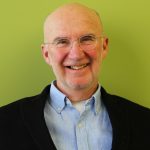As we await the two “solutions” to the COVID-19 pandemic – a vaccine and an antiviral agent, it is important to remember that the older you are and the more long-term conditions you have, the more activity you will need.
Months of isolation and advice for vulnerable older people to remain at home have had an immense deconditioning effect of epidemic proportions, affecting millions of people.
Until the vaccine and treatment for a COVID-19 are available, being active and physically fit is the best thing we can do to improve our health reserve and enable us to withstand “insults” such as viruses and traumas from motor-vehicle crashes or risks of developing or worsening long-term health conditions including heart disease, stroke, cancer, dementia and depression.
Physical activity has been called a miracle cure by the Academy of Medical Sciences.
Research reveals that any level of activity is better than none and that more is better still. Furthermore, the evidence that activity is good for both body and mind is impressive.
Physical activity keeps arteries healthy directly and indirectly. The direct effect is only now being understood but it does appear that it can prevent inflammation that leads to atherosclerosis and the furring up of the arteries with atheroma, a porridge-like substance made up of fat and inflammatory tissue. The fatty charges all have the same cause, intake of excessive calories from food and under-expenditure of calories through lack of activity.
The resulting conditions, hypercholesterolemia and pre-diabetes for example, have names that sound as though they are real diseases like rheumatoid arthritis or tuberculosis. However, they are just the consequence of our modern environment dominated by cars, the Internet, the computer screen, the desk job and an environment in which high-calorie food is easily available and cheap. No one wants to return to the days in which backbreaking work was the norm for the poorer people in society. Even workers digging up roads now perform less physical activity, sitting on their bottoms and using thumbs to control mechanical excavators. However, this widespread sedentary lifestyle influences blood pressure, blood sugar and blood lipids.
Everyone has cholesterol, lipids and sugar in their bloodstream and everyone has blood pressure. They are all essential for life. However, when inactivity, often aggravated by consuming more calories than needed, increases the levels of these chemicals, they change from being essential to becoming risks.
They are risk factors not diseases but the medical profession has given them names as though they are diseases like severe acute respiratory syndrome (SARS): hypercholesterolemia; type 2 diabetes; high blood pressure.
Most of the studies so far have looked at the impact on heart disease but increasingly there is evidence of an impact on dementia as well. Even more exciting, perhaps, is the more recent research on the direct impact of exercise on the brain. In 2015, the Harvard Medical School, one of the world’s top medical schools, published a fascinating report on the benefits of walking for health and on the brain.
So how can we be more active? This “checklist” outlines the activity, benefits and sample exercises for each of the three essential types of physical activity: flexibility, strength and endurance.

Physical activity is safe and beneficial for almost everyone. People should “start slow and build up” to avoid injury. Those with long-term conditions may need to seek advice for a tailored exercise prescription.
There are far fewer drawbacks for physical activity than for other widely used preventives and cures. Indeed, physical activity is an alternative to antidepressants and painkillers for people struggling with physical or psychological pain. It seems to have few, if any, side effects and is not generally addictive unlike some prescription drugs, although exercise addiction does occur.
Physicians now recognize that another benefit of physical activity is that it does not prompt overdiagnosis, unlike “intensive precision screening” looking for disease. Proponents of this type of screening refer to the use of genome analysis and other “big data” and artificial intelligence technologies that enable unprecedented monitoring of the human body. However, the proponents of these plans, which are still largely theoretical, ignore accumulating evidence that they come with a high risk of over-medicalization and over-diagnosis. Taking another pill is not always the best prevention or treatment solution for what ails us.
“Living is not merely living, but living in health,” wrote the Roman poet Martial in his 1st century epigram.
Understanding of the importance of physical activity to increase our health reserves will lead us to rethink our activities as we live longer and take action to reduce the risks of dementia, frailty and the need for social care.

Larry W. Chambers has authored articles and books on disease prevention, improvements in long-term care homes and innovative approaches for continuing professional development. He is Research Director of the Niagara Regional Campus, School of Medicine, McMaster University.

Hanna Levy and Eva Liu are medical students at the Niagara Regional Campus of the McMaster University, School of Medicine.



The comments section is closed.
I stopped the PD medications due to severe side effects and started on natural treatments from VineHealth Center (VHC) in California, the treatment has made a huge difference for me. My symptoms including tremors disappeared after the months long treatment! Go to ww w. vinehealthcenter. c om. This treatment is amazing!
Sport and fitness are missing from the UK’s Covid response Financial Times
https://on.ft.com/3fJC3IN